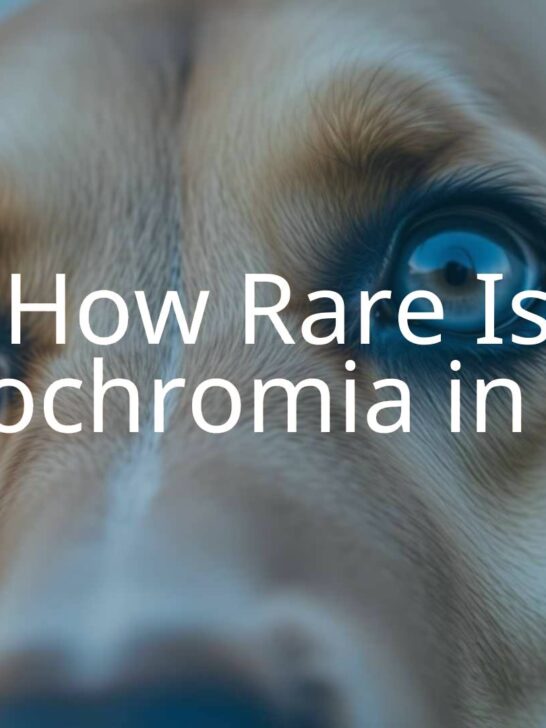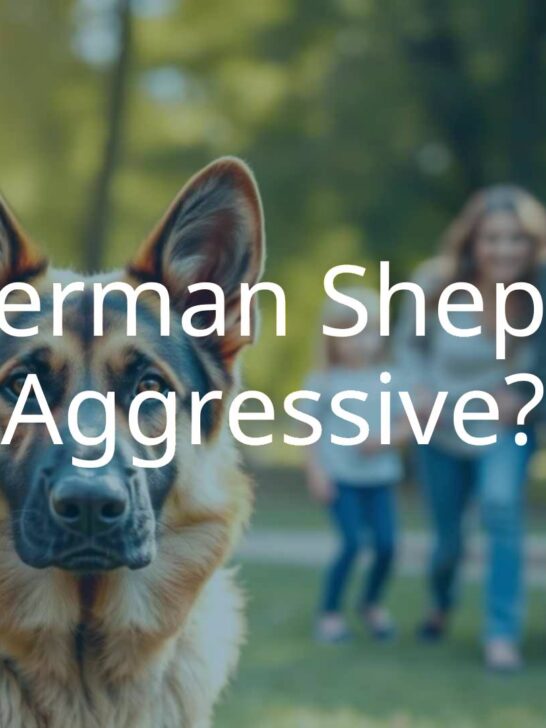German Shepherd or Goldendoodle: Which Should You Get?
Picking the right type of dog for your household can be a fun and exciting, yet daunting task. It’s not like there’s only a handful of dog breeds out there, is it? With around 400 recognized dog breeds in the world, there’s a lot of research and choosing to do.
If you have come across this guide, odds are you have whittled your forever dog search down to two breeds – German Shepherds and Goldendoodles. While some might assume that these breeds are easy to compare and contrast, German Shepherds and Goldendoodles share more characteristics than you might think.
We understand the importance of finding the perfect dog for your home. Whether you’re finding a dog to join yourself and your partner, or if you want a family dog that gets on well with kids, you’re certain to find a perfect match with either a German Shepherd or a Goldendoodle.
Here is the ultimate guide to both German Shepherds and Goldendoodles! Hopefully, this will give you an idea of which breed you should get.
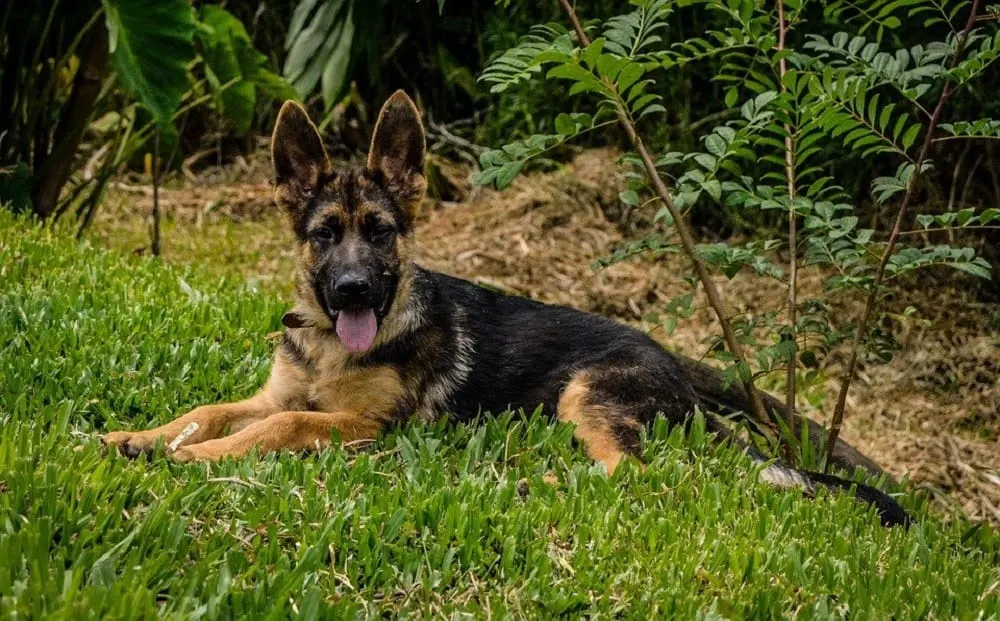
German Shepherds: Ultimate Guide
German Shepherds are one of America’s most popular breeds. These medium-large dogs are notorious for their working nature, as well as their intelligence, extreme loyalty, affection, and obedience.
Resembling something like a wolf, German Shepherds can come in a variety of coat colors. The most popular is the classic black-and-tan, but other colorings include black, tan, white, blue, and even liver according to recessive genes.
German Shepherd History
While German Shepherds look distinctly wolf-like, this is a surprisingly young breed of dog. As the name suggests, these dogs originated from Germany in the late 1890s.
The 1850s brought Europe a new wave of attempting to standardize breeds intended for protecting and herding sheep. It was no longer easy to simply herd a large flock of sheep without the help of a faster animal – nor could humans protect their flock from predators like foxes.
Germany began to practice standardizing breeds for this purpose around this time in local communities. Differences were shared between communities of what the perfect dog must be like, but the consensus was that the breed needed to exhibit strength, intelligence, loyalty, speed, and obedience.
In 1891, the Phylax Society was created to combat these differences. However, the differences of opinions meant that the society had to disband after three years. Some wanted the dogs to be bred for their characteristics, while others wanted the dogs to be bred for a threatening appearance.
Long story short, an ex-member of the society called Max von Stephanitz attended a dog show where he caught sight of a breed that encompassed everything the society wanted. He purchased the dog, who was then declared to be the first German Shepherd.
If you’re wondering how they managed to breed and standardize the German Shepherd, this dates back to around 15,000 years ago. All dogs descended from ancient European breeds and, like humans, have evolved over time.
German Shepherds started to become popular in America until the First and Second World Wars, where Germany utilized the breed’s appearance and intelligence for military purposes. Backlash began to appear as anti-German propaganda soared across America and Britain, where the breed became briefly unpopular. However, this didn’t last long as people began to realize that they couldn’t blame a dog for the immoralities of humans.
Since then, German Shepherds have rightfully earned their place as one of the most popular breeds in the world.
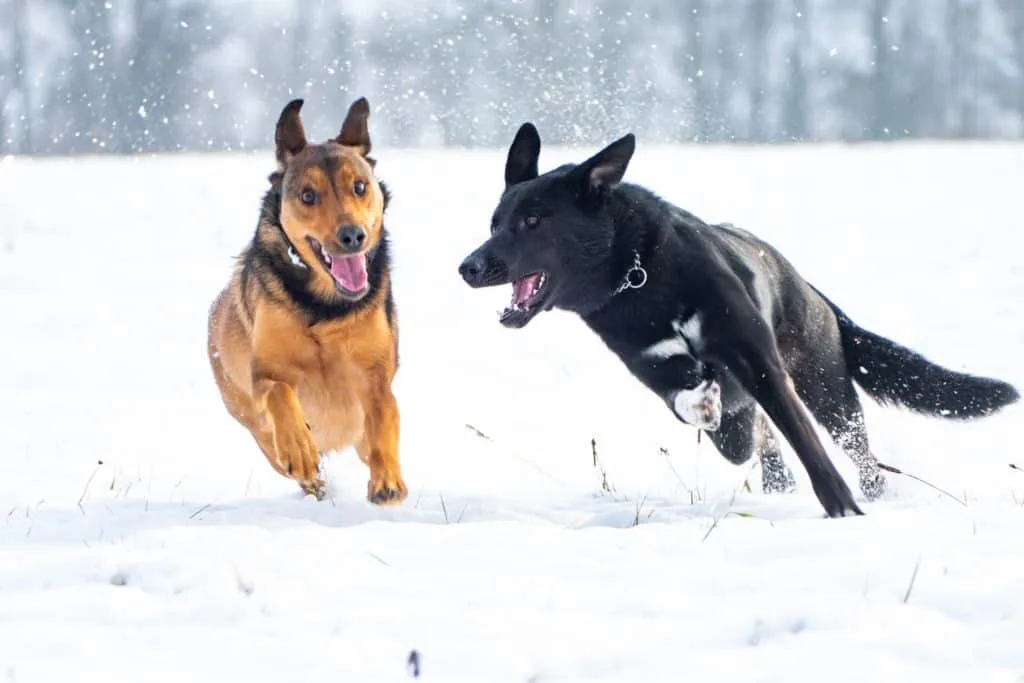
German Shepherd Appearance
German Shepherds are notorious for their wolf-like features. They are classed as medium to large breeds, averaging between 22-26” tall with long bodies. Their snouts are long, their ears are tall, and they have a distinctive muscular build.
This muscular build is generally hidden by a mass of fur. German Shepherds have two coats – a thick undercoat for insulation and a wiry topcoat for protection against the elements. The most common color of coat is the classic black-and-tan color, which can come in a variety of patterns. If you’re wanting to know the difference between different German Shepherd colors, you’ll be pleased to know that their coloring does not change their temperament or health risks!
Depending on the sex and size of the dog, German Shepherds can weigh anywhere between 49 and 88 pounds. They can also live between 9 and 13 years depending on any health problems they might encounter.
German Shepherd Personality
Despite their handsome and somewhat threatening appearance, German Shepherds are one of the most loyal and kind breeds you can find.
It can take a while for a German Shepherd to trust you. If you raise a German Shepherd as a puppy, they are far more likely to quickly become your companion than a rescued adult. This is because they can be distrustful of unfamiliar faces and voices, causing them to act aloof and distant. However, the results are worth it.
Once you gain their trust, German Shepherds can develop and undetachable and unconditional loyalty to their human(s). This loyalty is what makes them an ideal companion for any household, as they will protect and defend their human(s) until the very end.
These are intelligent, strong, and fast dogs that will only get aggressive when defending the ones they love from intruders and suspicious people. This is because they were only recently bred to protect flock, which means they are highly defensive animals. Still, their intelligence means they are highly obedient and easy to train.
This defensive and protective nature make them an ideal companion for families with children. Despite their size and somewhat threatening look, they can be so affectionate towards kids of all ages – but only if they are trained properly (as with any dog).
German Shepherds are highly energetic dogs that need a lot of exercise. This is partly because of their medium-large muscular build, and also because the breed can be prone to hip dysplasia and joint issues.
German Shepherd Energy Levels
German Shepherds are notoriously energetic dogs. This can be quite a struggle when owning a German Shepherd puppy, as they are prone to destroying (or in their eyes, playing with) everything in sight. Prepare to find ripped-up toilet paper, torn toys, and chewed-up furniture.
They just need to get their energetic bursts out of the way until they curl into a ball and fall asleep. This is why taking them on long walks and playing with them in a controlled environment is so important, because it means you can compartmentalize the bursts of energy. They are obedient, remember, so they will learn when playtime is acceptable.
The energy levels of a German Shepherd means that they aren’t an ideal breed for households who cannot commit to exercising and training their dog daily. However, once the hard part is over when they are puppies, you will be rewarded with a calm-natured dog that enjoys socializing with other dogs in the park.
German Shepherd Faults
It almost feels wrong to point out the faults of a dog. Still, it’s important to look at the downsides of a breed so you can get an idea of what to expect.
Due to their loyalty and protective instincts, German Shepherds can be prone to separation anxiety. This can be amended by training the dog to realize that you will return home. However, as dogs don’t have a sense of time, they can get nervous that you might not come back. This can result in accidental urination, whimpering, and chewed furniture.
As German Shepherds come from a hunting background, there’s always a chance of them running after small animals like squirrels or rabbits. The only way to train them against doing this is to perfect their recalling obedience so they don’t run off when you call their name.
Also, as they are such energetic dogs, German Shepherds can get bored easily. This means that you have to commit to giving them treats and toys to pass the time when they aren’t on walks. Otherwise, this can result in chewed-up shoes and furniture, or even aggression.
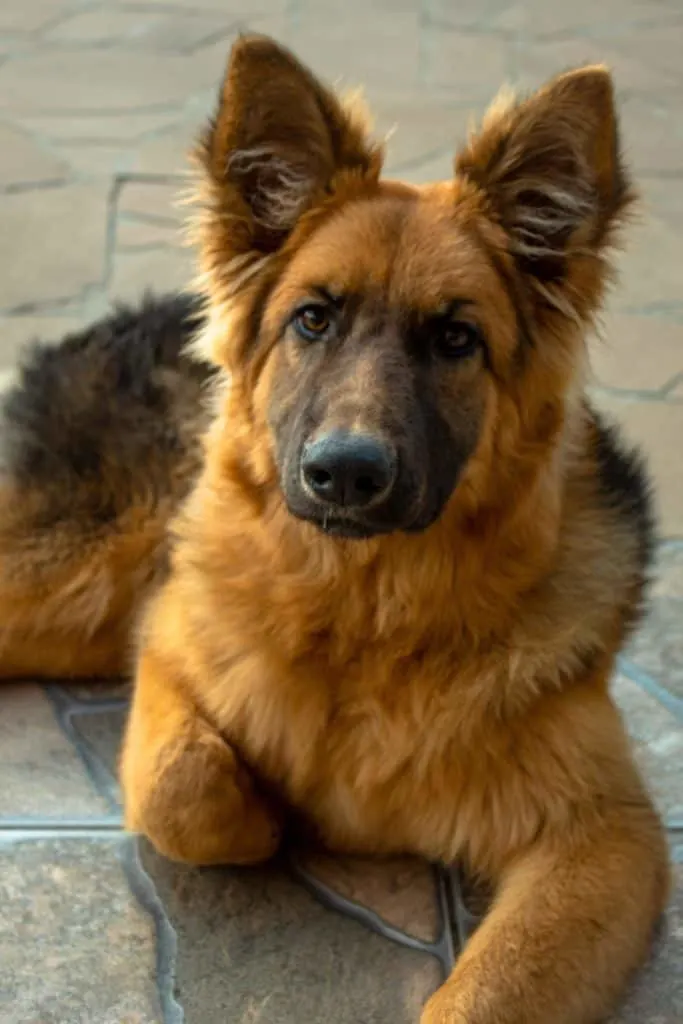
German Shepherd Health Risks
Like any breed, German Shepherds do come with some potential health problems that need to be addressed. German Shepherds are medium-large dogs, which means they can come with an array of health risks typically associated with other large breeds. This includes:
- Bloat
- Hip dysplasia
- Elbow dysplasia
- Joint disease
- Eye problems (cataracts)
However, German Shepherds also come with some health issues that are unique to their breed. This includes and isn’t limited to:
- Dental issues
- Epilepsy
- Nose infections
- Thyroid problems
- Allergies
- Urinary tract infections
- Hemophilia
- Degenerative myelopathy
There’s a variety of reasons why German Shepherds might develop health problems. This can range from size, age, sex, genetics, and dogs just being dogs.
There also isn’t much that dog owners can do to prevent their pooch from developing cataracts or joint issues. This is primarily due to age and their size, which means most German Shepherds live up to 10 to 11 years on average.
Due to their size and energy levels, German Shepherds are also prone to developing arthritis. They will remain active even in old age, so water-based activities and physiotherapy are recommended for elderly German Shepherds to aid their joints.
German Shepherd Diet
The build of German Shepherds means that they have specific dietary requirements that must be met to prevent them from developing health issues, such as obesity, joint problems, and dental issues.
The key is to focus on a high-protein and low-carb diet. Carbohydrates such as potatoes are basically doggy fillers that work to temporarily fill a dog up and contribute to weight gain. Carbs aren’t essential in a dog’s diet unlike protein, which is essential for supporting the muscles.
Kibble is a great choice of food for all dogs, as the hard biscuits help to brush away plaque and tartar. However, German Shepherds also love the occasional raw food as a treat – plus the protein from meat gives them an awesome energy kick!
The key ingredients to look out for are all-natural ingredients, including protein (chicken, fish, lamb, beef, eggs, etc.), complex carbohydrates like peas or sweet potatoes, and antioxidants like blueberries. Keep them away from salt and fat, as this won’t be beneficial for their large bodies.
Caring for a German Shepherd
Despite common misconceptions, caring for a German Shepherd isn’t a difficult task. They are very intelligent animals, so training them is straightforward. Once they are obedient and grow out of the “tear everything up” phase as puppies, they are fairly easy to care for.
There are two main aspects of caring for a German Shepherd that are considered high maintenance: exercise and hair care.
As we said before, German Shepherds are energetic dogs that require daily exercise. Without this exercise, they can become cheeky in the house by chewing toys and furniture. Lack of exercise can also negatively affect their joints.
This also means that they need a constant distraction, especially when they are younger. German Shepherds love to play with dog toys to fetch and “kill”, which is a good way to control their energetic bursts when they are puppies and young dogs. Anything to distract them from chewing furniture and shoes!
German Shepherds have two layers of their coat, so they shed all year round. This means that you have to be prepared to deal with a potentially hairy house, so it’s wise to invest in a vacuum cleaner that is designed to deal with hair. Also, this means that German Shepherds are not hypoallergenic, so they’re not the best dog for people with allergies.
You should make sure to brush your dog’s hair regularly to prevent matting and to help old hair to shed properly. Grooming brushes like this BarxBuddy Slicker Dog Brush are ideal for German Shepherds, as the bristles are firm yet soft to help pull out all the old hair. This will help to prevent constant shedding. Plus, there is a useful button that self-cleans the brush, which is always a bonus.
Alongside hair care, make sure to trim their nails frequently. In most cases, walking dogs on concrete will naturally trim the nails, but it’s always good for your groomer to do this anyway. Plus, as with any dog, try to brush their teeth at least once a week to prevent plaque buildup.
One bonus to German Shepherds is that due to their double-layered coats and constant shedding, they only need to be bathed every four to five months. Of course, if your pooch has been rolling around in mud, you should wash it immediately!
Goldendoodles: Ultimate Guide
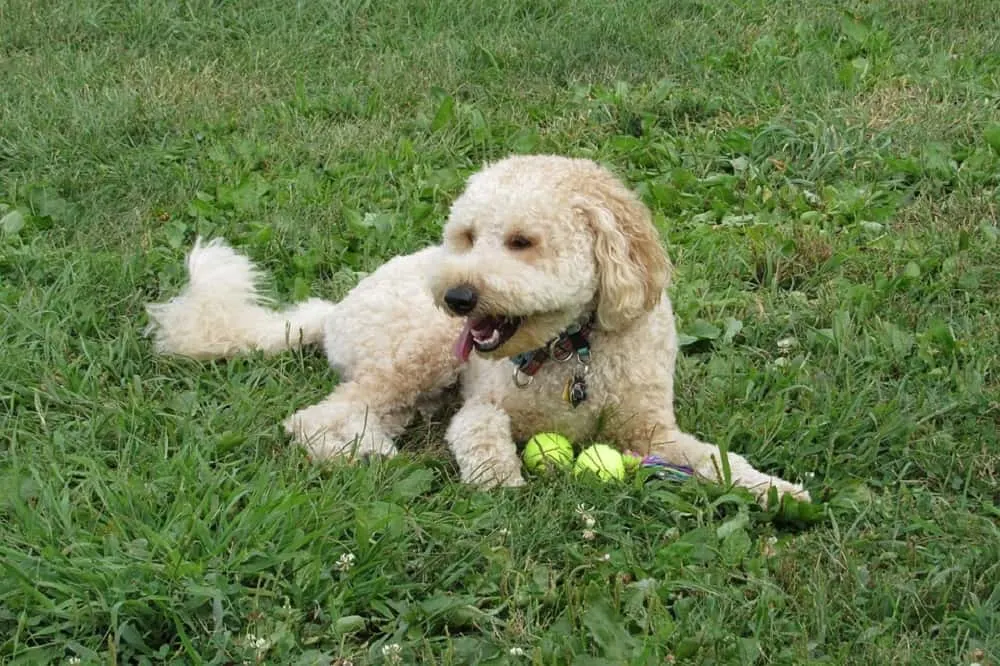
If you thought German Shepherds were a relatively young breed, you’ll be surprised that Goldendoodles have only been bred in the last 30 years. A mix between a Golden Retriever and a Poodle, these adorable dogs are one of the most popular dogs for families with children.
However, as they are a fairly new hybrid breed, there is still information that is fairly unknown about Goldendoodles. Regardless, here is our ultimate guide to Goldendoodles!
Goldendoodle History
Goldendoodles came about in the 1990s by designer dog breeders in Australia and America. They bred Golden Retrievers with Poodles, hence the name, with the goal to make a dog with both characteristics of its parents. From the Golden Retriever, these dogs are highly affectionate and cuddly. From the Poodle, they are highly intelligent and have a hypoallergenic coat. Plus, they are super cute.
Interestingly, the 1990s wasn’t the first time a Goldendoodle was bred. Monica Dickens, the great-granddaughter of Charles Dickens, crossed a Golden Retriever with a Poodle in 1969.
As Goldendoodles are a fairly new hybrid, their history is limited. Let’s have a look at the history of the parents of a Goldendoodle!
Golden Retriever History
In the mid-19th century, Golden Retrievers were bred in Scotland for hunting purposes. As the Scottish wanted a dog that could hunt on both land and water, they bred water Spaniels with existing Retrievers that weren’t yet suitable for hunting in water. The first Golden Retriever was developed near Glen Affric in the Highlands.
Like with German Shepherds, the existence of Golden Retrievers comes down to one man. Dudley Marjoribanks was walking around Brighton with his son in 1865, where he came across a unique golden dog. He eventually purchased the dog several years later, who later became the first dog to be bred with a Spaniel to create Golden Retrievers.
The first litter of Golden Retrievers was born three years later, but they weren’t sold due to their rarity. After more breeding, they eventually became sold as special gifts, so Golden Retrievers became a symbol of wealth, elite status, and good luck. This is why Golden Retrievers are one of the most popular dog breeds in the United States and the world.
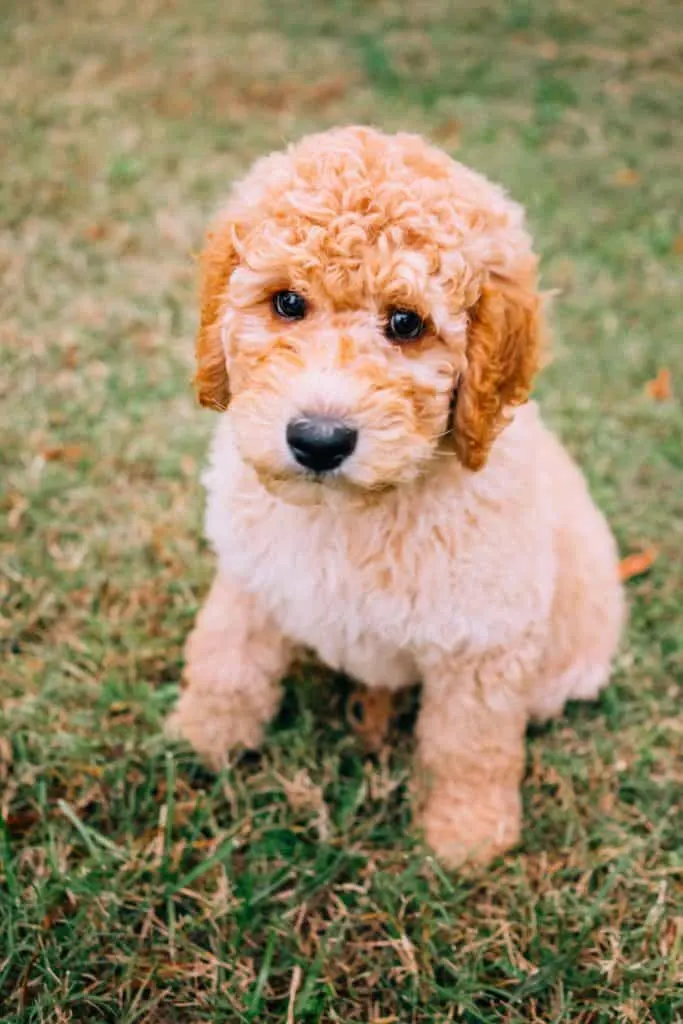
Poodle History
While Poodles are usually associated with French culture, they actually originated from Germany in the 14th/15th century. The name “Poodle” came from the German word “pudel”, which loosely translates to “puddle”. This is to suggest that the dogs are fond of water.
As the name suggests, Poodles were originally bred to be water hunters. This might seem surprising to some, as Poodles are usually associated with their somewhat pompous appearance. In fact, their unique haircut was believed to help them to swim better in water as it worked as a clever insulation.
Poodles were introduced to America when the American Kennel Club recognized the breed in 1887. As they were famously owned by French royalty, they were (and still are) associated with the upper class, just like Golden Retrievers.
Goldendoodle Appearance
As Goldendoodles are a fairly new hybrid breed, each litter looks slightly different from the other. This is because the breed is yet to become a fully-fledged breed. We can assume that Goldendoodles are more likely to look similar to each other in the next 20-30 years, but that’s anyone’s guess!
Poodles come in three different sizes – miniature, toy, and standard – which means that Goldendoodles can come in a variety of sizes depending on the parent. They exhibit visual characteristics of their parents – golden hair that is gently curled. It’s not quite as tight as Poodle hair, but not as straight as Golden Retriever hair.
However, it’s not easy to say what every Goldendoodle looks like, as it all depends on their parents. In most cases, these dogs look like giant teddy bears.
The hair color can vary between a light golden to a rich golden-brown color depending on the parentage. However, as one of the parents is a Poodle, Goldendoodles are hypoallergenic dogs. Unlike German Shepherds, this makes them an ideal breed for those with allergies.
Goldendoodle Personality
As with the history of Goldendoodles, it’s probably easier to first explain the personality traits of both Golden Retrievers and Poodles to help you to understand the personality of the hybrid breed.
Golden Retriever Personality
Golden Retrievers are notorious for their highly affectionate and loving nature and laid-back attitude to life. They are such a popular dog for families, as they are non-aggressive, loyal, and brilliant with kids.
No matter their age, Golden Retrievers just want to play and have cuddles. Obviously, they are less energetic and playful when they are older compared to when they are puppies, but they are still enthusiastic nonetheless. They are also brilliant nurturers, which is why they are great when it comes to protecting and loving kids.
Not only are they intelligent, but Golden Retrievers are very eager to please, which makes them easy to train.
Poodle Personality
Poodles are surprisingly more energetic than Golden Retrievers due to their water-based history. They love to gallop and trot around parks and fields with other dogs and humans.
Poodles stand out for their intelligence. They are incredibly obedient and can be trained well, which means they are also an incredibly independent breed. Unlike Golden Retrievers, Poodles can come across quite standoffish.
Goldendoodle Personality
Put the two together, and you’ve got a beautifully loveable and intelligent hybrid. Their personality is probably more like the Golden Retriever, as they don’t tend to exhibit the pride and confidence that Poodles have.
Of course, it depends on the personality of the parents, but Goldendoodles are intelligent, affectionate, energetic, and loyal dogs that make them perfect for families with kids.
Goldendoodle Energy Levels
As they come from two energetic breeds, Goldendoodles are fairly active dogs. Remember that Golden Retrievers are less energetic than Poodles, so their hybrid pups are a mixture of the two.
This means that Goldendoodles are a great mix between laid-back and energetic, which is ideal for families who cannot commit to exercising a dog like a Poodle several times a day. Goldendoodles are more playful than energetic, so they will happily enjoy play time alongside a nice walk rather than multiple long walks in a day.
Again, this also depends on the energy levels of the parents.
Goldendoodle Faults
As with German Shepherds, Goldendoodles are incredibly loyal dogs. This means that they can develop separation anxiety due to the bond formed with their human(s). Separation anxiety, if not treated at a young age, can result in barking, chewing, urination, and even vomiting.
Goldendoodles can enjoy the sound of their own voice. While they aren’t the most fearsome-looking guards, they are likely to bark when people come to the door or if they see another dog across the street. This can be amended by teaching them to not bark at a young age.
Goldendoodle Health Risks
While Goldendoodles are a fairly healthy breed, as with any dog, they are prone to some certain health issues that both parents are susceptible to. Their life expectancy is usually between 10 and 15 years.
Like German Shepherds, Golden Retrievers and Standard Poodles are a medium-large breed that can experience certain similar health problems, including:
- Joint problems
- Hip and elbow dysplasia
- Cataracts
It all depends on the size of the Goldendoodle. Standard Poodles, the largest of the three Poodle sizes, have a shorter average lifespan of 10 years compared to toy and miniature poodles, which can live up to 15-18 years old. This is because of the size of the dog and the Standard Poodle’s tendency to develop joint problems.
Other genetic diseases that Goldendoodles could develop include:
- Heart conditions
- Sebaceous adenitis (a skin condition)
- Addison’s disease
- Ear infections
In short, Goldendoodles are generally a healthy breed that can live many years. When looking to buy a Goldendoodle, make sure to get the medical records of the parents to get an idea of any potential health problems that could arise.
Goldendoodle Diet
The diet for Goldendoodles is pretty much the same as the diet for German Shepherds. High-protein and low-carb diets are generally the best for all dogs, as it prevents them from gaining weight whilst providing them with all the nutrients they need.
Goldendoodles can be prone to allergies to grain products. This means you should avoid buying food that includes barley, wheat, rye, oats, rice, and other grains.
While their coats are naturally soft and fluffy, it’s good to find foods that contain omega-3 fatty acids to contribute to a healthy coat and skin. This will also help to prevent them from developing skin conditions.
It’s important to remember that Goldendoodles can have sensitive stomachs, so you have to keep them to a strict diet that doesn’t contain much human food. Kibble is great for Goldendoodles, as it helps to keep their oral hygiene in good condition.

Caring for a Goldendoodle
As Goldendoodles derive from two energetic and intelligent breeds, they require almost constant mental and physical stimulation. Fortunately, their intelligence makes them highly obedient and eager-to-please dogs, so training them to not chew furniture and shoes when they are bored is fairly easy!
As most people buy Goldendoodles as puppies, you should invest in toys and long-lasting treats to distract them from destroying everything else in the house. Even if you adopt or buy a Goldendoodle as an adult, they are fast learners.
In terms of exercise, Goldendoodles are an ideal mix between energetic and laid-back. This means that once you have taken your dog out for a long walk, they are likely to cuddle up on the sofa and nap afterward.
As for hair care, their curly hair needs to be brushed to prevent knotting. Their hair is hypoallergenic, but it still sheds sometimes. Brushes like this ShedTitan Pet Brush and Comb are ideal for Goldendoodles, as the wiry bristles help to detangle curls to prevent matting, while keeping the curls firmly in place.
Unlike German Shepherds, Goldendoodles need bathing around once a month. Leaving their bathing too far apart will make them smell, and bathing them frequently can contribute to skin irritation.
German Shepherds vs Goldendoodles: Which Should You Get?
So, the time has come to answer the question you are all here for: which dog should you get?
Unfortunately, we simply cannot give you a solid answer. This is something you’re going to have to figure out yourselves.
It mostly depends on your situation. Of course, we cannot tell you which is the right dog for whatever situation, but here is a general idea of which dog works for which household.
Germans Shepherds are excellent dogs for those who have had dogs in the past. It doesn’t matter whether you have kids or not, because they are excellent protectors for children. As they require a lot of training to be as obedient as they can be, it’s best that German Shepherd owners have some sort of dog experience.
Due to their energy levels and requirements, German Shepherds are best suited for homes with a backyard. They are fairly large dogs that can take up a lot of space in apartments, and they might not appreciate the lack of freedom to wander outside.
Goldendoodles are better suited for new dog owners. Like German Shepherds, they are just as easy to train, but they are quicker at recognizing who to trust as their owners due to their eager-to-please attitude. They are wonderful with kids due to their nurturing nature. Plus, Goldendoodles are hypoallergenic, which is ideal for households who have allergies.
These dogs can live in either an apartment or a house with a backyard. Still, they are fairly energetic dogs who might want to run around a yard – especially as puppies. They will need the same amount of attention as German Shepherds due to the fact they can get bored easily.
Also – German Shepherds can take a while to get used to new faces, both animal and human. This means that you might need to spend more time training them to befriend an existing household pet compared to Goldendoodles, who could befriend a tree if they could.
In terms of which dog is easier to purchase, there are more German Shepherds than Goldendoodles. Goldendoodles are still considered a designer breed, remember, so they can often be more expensive or as expensive and pedigree German Shepherds. It can be harder to find a Goldendoodle due to how new the hybrid breed still is.
If you’re still struggling to decide which breed is best for you, ask yourself these questions:
- Do I have the time and energy to take care of a dog 24/7?
- Do I have the necessary needs to take care of hair shedding and/or grooming?
- Do I (or another household member) have allergies?
- Have I got the funds and knowledge to take care of the dog when they are older if they encounter health problems?
- Have I got the time to dedicate affection and love to the dog?
- Do I have another dog or cat who might not socialize well with a new dog?
- Do I have enough space in my home to accommodate a medium/large dog?
When it comes to exercise and feeding, both German Shepherds and Goldendoodles have near enough the same requirements. This might make your search for the perfect dog a bit easier!
Conclusion
As you can see, it all comes down to personal preference and individual situations. Both German Shepherds and Goldendoodles are wonderful additions to families of all types – whether you’re interested in getting a dog with your partner or a companion for your kids.
German Shepherds and Goldendoodles are incredibly clever and loving animals that can form undetachable bonds with their humans. Whichever breed you choose, make sure you can commit yourself to unconditional love and affection. Not exactly a hardship given how gorgeous both dogs are!














